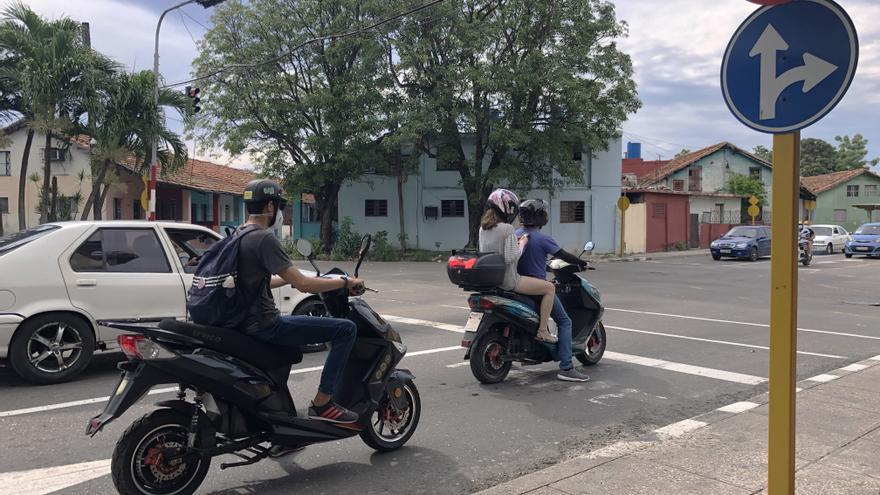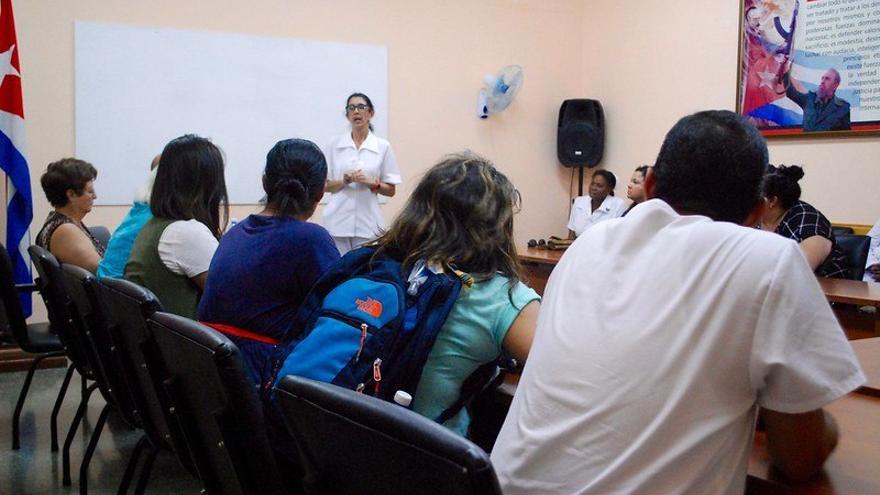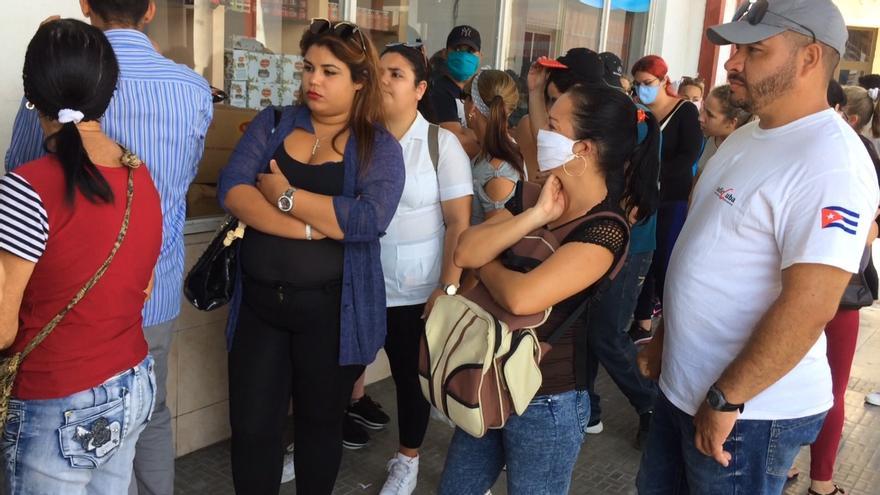
![]() 14ymedio, Cynthia de la Cantera, July 1, 2020 — The stars have aligned for anyone who sees the electric motorcycle as a great business opportunity. At the end of 2019 there were already about 200,000 of these vehicles in Cuba. The recent boom is fueled by a combination of several factors: an inadequate public transport system, gasoline shortages, the vehicle’s ease of driving and the job opportunities it provides during the pandemic.
14ymedio, Cynthia de la Cantera, July 1, 2020 — The stars have aligned for anyone who sees the electric motorcycle as a great business opportunity. At the end of 2019 there were already about 200,000 of these vehicles in Cuba. The recent boom is fueled by a combination of several factors: an inadequate public transport system, gasoline shortages, the vehicle’s ease of driving and the job opportunities it provides during the pandemic.
“With all the transportation problems we have in this country, where taking a taxi is difficult even if you have the money, it was more feasible for me to buy a motorcycle, despite how expensive they are,” says Camila Alonso, a young woman who invested 1,500 convertible pesos (CUC) she had saved for one of these vehicles. “With a scooter, you don’t have to wait forever at a bus or car stop. Travel times are shorter,” she reasons.
Getting one, by contrast, was more time consuming. She could have afforded to buy a new model, which comes with a guarantee, at a state-owned store. The motorinas, as they are known locally, are made in China under the brand name Minerva and assembled in Santa Clara by the Angel Villareal Bravo Company. According to an article published late last year in Granma, the price for one of these scooters was 999 CUC, seemingly quite reasonable for a brand new product. continue reading
“We get a lot of scooters that came with a guarantee but that broke down after a month of operation,” says Brian Arocha, a mechanic at a shop in Havana’s Vedado district who has found a niche market servicing these popular vehicles.
The young man claims the scooters sold by the state are not of great quality but notes that the need for transportation is so great that buyers will resort to anything,” especially if it’s cheaper than buying a car or an internal combustion motorcycle,” he says.
Smugglers, always attentive to market demand, sensed an opportunity and began importing the scooters through Panama’s Colón Free Trade Zone. Cuban customs regulations allow such a vehicle to enter the country for 200 pesos provided it does not exceed 1,000 watts of power and cannot go faster than 50 kilometers per hour.
Brian claims these e-scooters are of better quality than those sold in outlets run by the Cimex and Caribe retail chains: “Those stores don’t have experienced staff assembling the scooters so they make bad [electrical] connections. Over time, this results in false starts, short circuits and mechanical problems.”
This, along with the inconvenience of buying the product at a government-authorized store that requires payment with a certain type of card,* convinced Camila to buy a used scooter from a private importer. For three days she poured over online classified ads on Revolico and Porlalivre until she found the scooter that was just right for her: a Raybar, model EA3, in red.
Prices for a high-quality electric scooter are comparable to the Cuban Minervas. A Mishozuki Tiburon, one of the most expensive and popular models, costs between 2,500 and 2,800 CUC new and between 1,900 and 2,000 used. Virtually none of the new imported models goes for less than 2,000 CUC.
Nevertheless, many people view the purchase price as an investment. The pandemic has led to a boom in home deliveries and having a motorcycle can be a big help when it comes to finding a job.
There are classified ads on Revolico by businesses looking for drivers to deliver pizza, prepared food and produce. For Alvin Pino, the owner of a food delivery business, the popularity of motorinas has helped him boost profits. “They’ve really stimulated home delivery. There are more electric scooters now so this service has grown,” he says.
Others see a scooter as a job opportunity and post ads offering to transport “anything that fits in a box or a backpack.” As of yet, that does not seem to include people, whose weight can impact the battery by requiring more frequent charges, notes Camila, who doubts that the vehicles’ engines would allow them to be used as taxis.
The average range of these vehicles is thirty miles, adequate for getting around urban areas. To fully charge a scooter, however, usually requires four to eight hours of electricity, which could cost as much as 130 pesos a month.
In spite of frequent blackouts in Cuba, which have become more frequent since last September due to what the government describes as a “temporary” situation, there is often no problem recharging batteries. It is certainly simpler and less complicated than filling a car’s tank with gas, and also less polluting. Scooters are also faster and require less physical effort than bicycles, which many citizens appreciate given the island’s tropical heat.
But there are disadvantages. Motorcycles are used mainly by young people and require no license unless they are over 1,000 watts and can reach speeds over 30 miles an hour. This suggests the vehicles are low risk and do not require adequate protection measures, such as the use of a helmet. However, in the first four months of 2019 alone, there were 207 motorcycle accidents in which 10 people lost their lives and another 121 were injured
“Motorcycles are generally purchased by people who travel, who make deliveries and who work in sales. People who work in tourism, who get remittances from overseas and who work in the private sector also buy them. They’re usually business owners, not employees, because there are places where someone who is self-employed still can’t buy a motorcycle,” says Brian.
In spite of all this, the pandemic has put the market on hold. As long as “mules” are unable to travel, private imports of electric scooters are frozen.
*Translator’s note: State-run stores that sell goods in hard currency require customers to pay using dollar-denominated bank cards from accounts opened with convertible currencies such as the dollar or euro.
_______________
COLLABORATE WITH OUR WORK: The 14ymedio team is committed to practicing serious journalism that reflects Cuba’s reality in all its depth. Thank you for joining us on this long journey. We invite you to continue supporting us by becoming a member of 14ymedio now. Together we can continue transforming journalism in Cuba.


